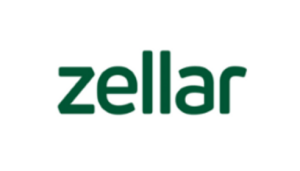7 Great Reasons to use Twitter for PR -


Communication is the essence of our job in PR. I was once told that a PR should spend 80% of their day talking to the media, and 20% talking to clients. It’s really easy for the pendulum to swing the other way as business priorities and client-facing work put increasing demands on our attention and time.
We love Twitter because it lets us stay in touch with media contacts and keep our fingers on the pulse when it comes to all the latest news, trends and activity. We have it open constantly. Here are 7 reasons why you should make Twitter part of your media strategy:
1. It’s the social media platform of choice for journalists
Journalists tend to spend more time on Twitter than LinkedIn or Instagram. It’s a written word platform, so it makes sense that this is where they would share their views on all sorts of things. Basically, if you want to know what journalists think (or perhaps will weigh in on), Twitter is the place to find out.
2. Be in the know when it comes to job and beat changes
Journalists tend to update their Twitter followers when they change jobs or beat, meaning you’ll find out a lot quicker than you would from media databases or a press release from their new publication or media outlet. Look out for the Klaxon (📢) emoji! It’s very commonly used on Twitter when new job tweets are shared.
3. Stay ahead when it comes to planned articles and breaking news
Following #journorequest will let you know about articles journalists are currently working on. That could mean that they’re seeking case studies, stats, or quotes for an urgent story that you could provide.
Top tip! Journalists don’t always use the hashtag, so follow and interact with journalists to give their requests for a spokesperson, or tweets with breaking news, a better chance to pop up in your timeline.
4. Get to know the journalists you follow
Journalists often interact with other journalists in their sectors, whether sharing the ‘fun stuff’ or talking shop, it’ll quickly show you who else you should be following. It might also give you some insights into their likes and dislikes – whether they’re discussing working from home or their favourite football teams – and can help build important relationships. Twitter beats LinkedIn when it comes to getting to know contacts as it’s a more personal platform.
5. Ditch the coffee
We all know people don’t use their phones as much anymore and journalists tend to work from home frequently. Without their (often personal and not available in media databases) mobile phone numbers or the many lunches and coffee meetings we were all so used to prior to the pandemic it can be more challenging to make the connections needed. Twitter can be helpful in making new connections and getting or staying in touch with hard-to-reach journalists.
6. You can create lists (and show me someone in PR who doesn’t love a list!)
You can easily create your own lists on Twitter, discover new ones created by others, share your lists with colleagues, and follow any that will help you. Once you know who covers your beat (because they’ve requested help for their articles) you can add them to your relevant list or find which shared lists they’re already in. Your personalised lists will arguably be more useful than anything you can pay for and find in a media database.
Top tips! Don’t forget to pin the most useful lists to your timeline by clicking on the push-pin icon (📌) next to the relevant item in your directory of lists. You can also keep lists private, meaning no one else will see them, and accounts added to those lists (whether you’re following them or not) won’t know which list you’ve added them to.
7. Build relationships around the globe
As Twitter is a global platform, it means you can easily connect with and respond to journalists around the world, increasing the reach you may usually get. It also provides access to trends and topics that have perhaps not made it to local news, giving you a chance to stay one step ahead of your more traditional competitors.
That’s it for the top reasons we believe PR agencies and start-ups should try to engage with media on Twitter. Leave a comment below and let us know how you use it.














